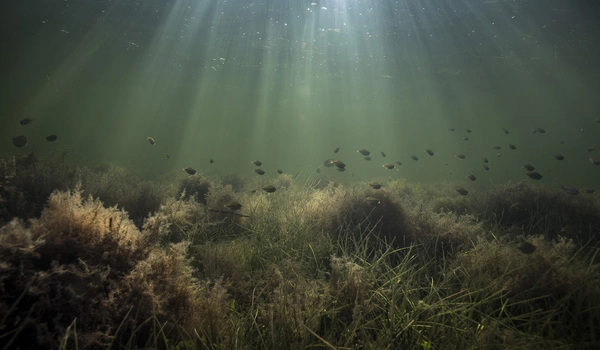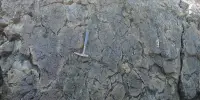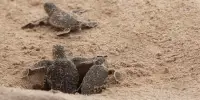Seagrass conservation benefits from widespread recognition of the importance of seagrasses to commercial and recreational fisheries production, as well as populations of “charismatic mega-fauna.” Seagrass management initiatives, such as special protection zones, are typically implemented only when the importance of habitats to commercial fisheries production or threatened species is clearly identified.
Researchers discovered that seagrass can reduce cliff erosion by up to 70% by binding the sand with its root mats. When storms wash the sand from the coast out to sea, the sea devours vast swaths of land. A new study led by a researcher from the University of Gothenburg found that seagrass can reduce cliff erosion by up to 70% by binding the sand with its root mats.
Coastal erosion is a global issue that is frequently addressed by replenishing the coast and beaches with new sand in areas where storms cause the most havoc. According to a 2016 survey conducted by the Geological Survey of Sweden, 12 percent of Skne’s coastline in southern Sweden is vulnerable to increased rates of coastal erosion. It is an even bigger problem in other countries. The coastline of the Netherlands is protected by stone and mud dikes. Another option is to rely on nature’s own coastal erosion defenses. Researchers investigated the significance of seagrass in coastal preservation in this new study.
We have seen that seagrass meadows in the coast are valuable assets in mitigating erosion. We already know that their long canopies serve as breakwaters, but now we can show that their root mats also bind together the underwater sand dunes, effectively reinforcing them.
Eduardo Infantes
“We have seen that seagrass meadows in the coast are valuable assets in mitigating erosion. We already know that their long canopies serve as breakwaters, but now we can show that their root mats also bind together the underwater sand dunes, effectively reinforcing them,” says Eduardo Infantes, a Marine Biologist at the University of Gothenburg and the lead author of the study which has been published in the journal Marine Ecology Progress Series.
More powerful storms in the future
Common eelgrass is a seagrass species that grows along Sweden’s coasts, and there are areas with large seagrass meadows growing on the bottom sediments, such as in Skåne. In other places, the seagrass has disappeared altogether. This not only represents an ecological loss, it can also mean that the coast becomes more vulnerable to erosion. As the climate changes, storms risk becoming more powerful, which in turn can lead to an increase in coastal erosion. Approximately 8% of the world’s population lives in areas at an elevation of fewer than 10 meters above sea level. Rising sea levels may see many people affected by coastal erosion.

“This is why it is even more important to preserve those seagrass meadows that still exist today and to replant seagrass in those places where it has disappeared. In our research, we have made successful attempts to restore common eelgrass meadows on the Swedish west coast, but if such replanting efforts are to succeed, there is a need for detailed studies of the current status seabed environment,” says Eduardo Infantes.
The researchers collected samples of sandy sediments with and without common eelgrass from various locations and placed them in a large tank capable of simulating waves for this study. The experiments showed that when seagrass grows in sand, waves erode it much less. The researchers also collected samples from muddy seabeds but discovered that the seagrass had less of an impact there. However, this is less important because muddy seabeds are more common in fjords and other areas that are less exposed to waves.
More factors in field tests
The next step will be to leave the laboratory and collect data on sand erosion along an exposed coast. Other factors such as currents, water traffic, river inflows, and so on can then affect erosion.
“It’s more complicated in the field, but we’ve created realistic storm waves in our experiments, and the seagrass has clearly shown a protective effect against erosion. I believe we will be able to demonstrate similar effects in field tests” Eduardo Infantes explains.
#Seagrass crucial to stemming the tide of coastal #erosion. #Coastalerosion is a global problem often combated by replenishing the coast and beaches with new sand in locations where storms wreak the greatest havoc. https://t.co/DXdymLRRNt
— IECA – International Erosion Control Association (@IECAglobal) December 7, 2022














